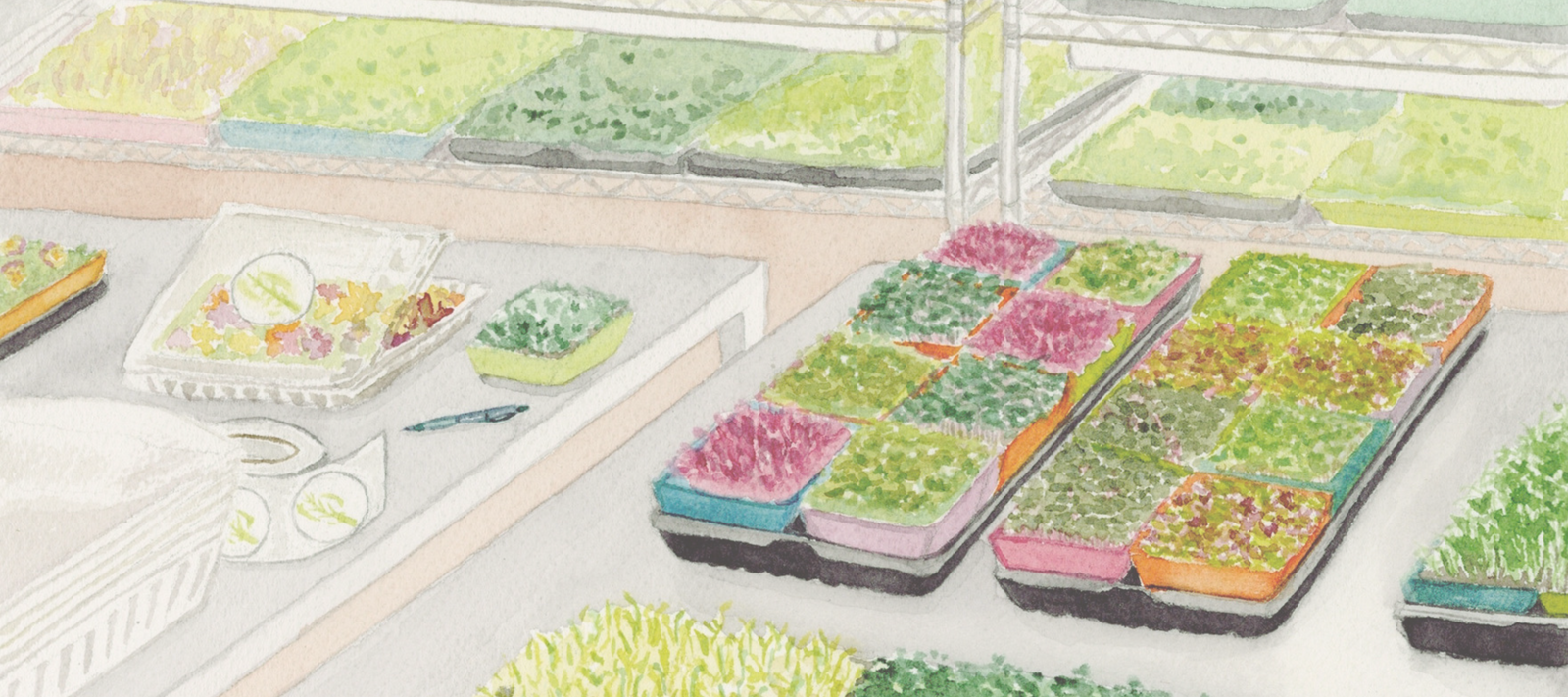
Microgreens Farming
Learn various methods of growing microgreens. We have comprehensive guides and information to make growing microgreens easy.
shop supplies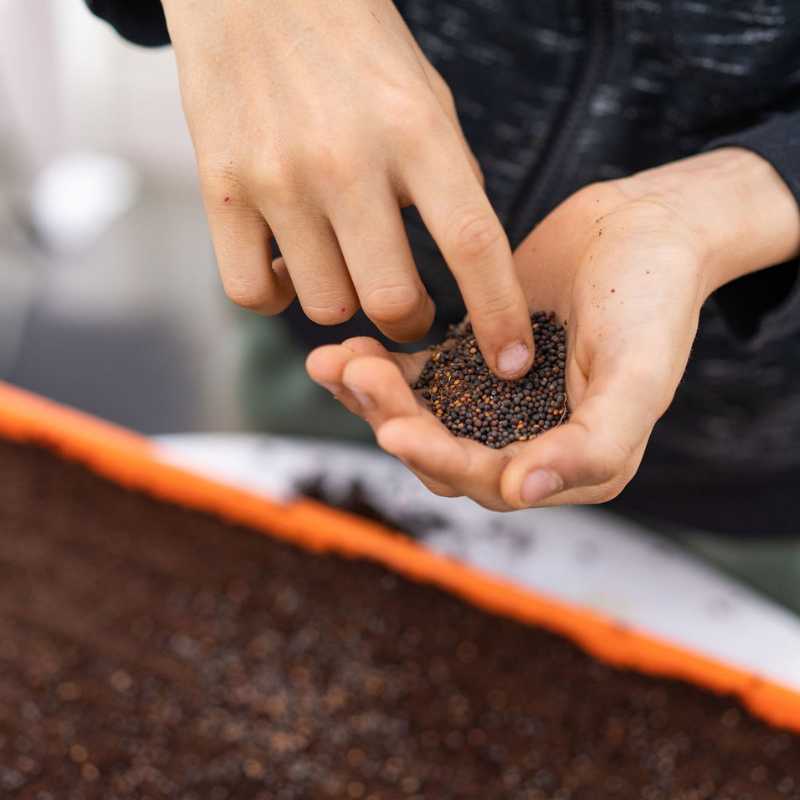
The Ultimate Microgreen Cheat Sheet
Learn how to grow microgreens with this comprehensive how-to guide. Read more to learn about growing, harvesting, enjoying microgreens from home!
The Ultimate Microgreen Cheat Sheet
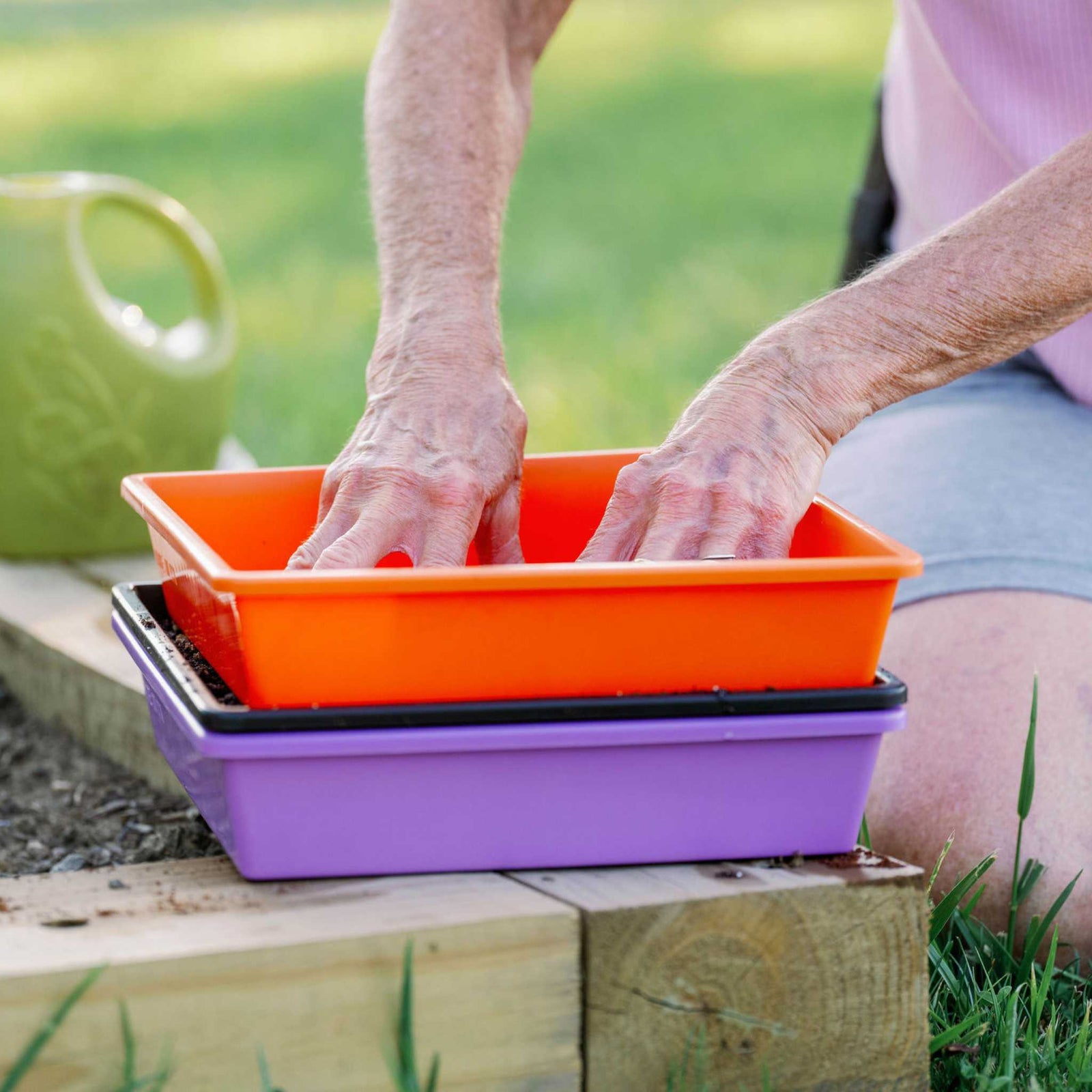
What Trays Do You Need For Microgreens
Which tray should you use? Learn about all of the Bootstrap Farmer trays in this guide. Find out which trays are best for your purposes.
What Trays Do You Need For Microgreens
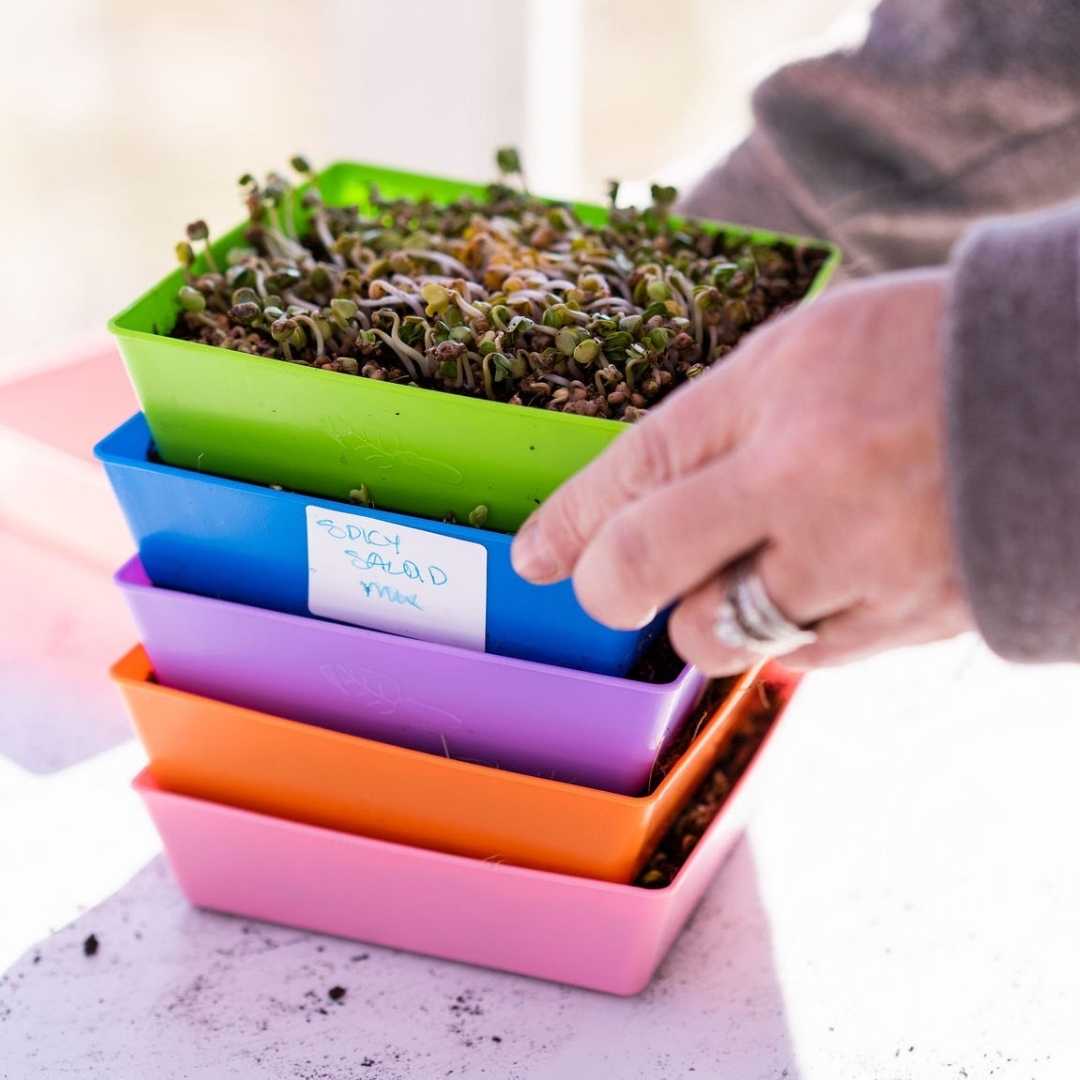
LEARN HOW TO GROW MICROGREENS AT HOME: A STEP-BY-STEP GUIDE
Microgreens are rapidly emerging as an added-value ingredient in kitchens and restaurants. Chefs love to use them to enhance the flavor and appearance of their plates. Microgreen's short turnaround from seeding to harvest allows for a great opportunity to learn systems quickly. .
LEARN HOW TO GROW MICROGREENS AT HOME: A STEP-BY-STEP GUIDE
Meet a Microgreens Farmer
Michelle is the grower behind For the Good, a small farm in Payson, Arizona, where she supplies her local community with vibrant microgreens and edible flowers. You can find her featured on the Bootstrap Farmer YouTube channel, where she walks through her setup and shares practical tips for growing microgreens at any scale.
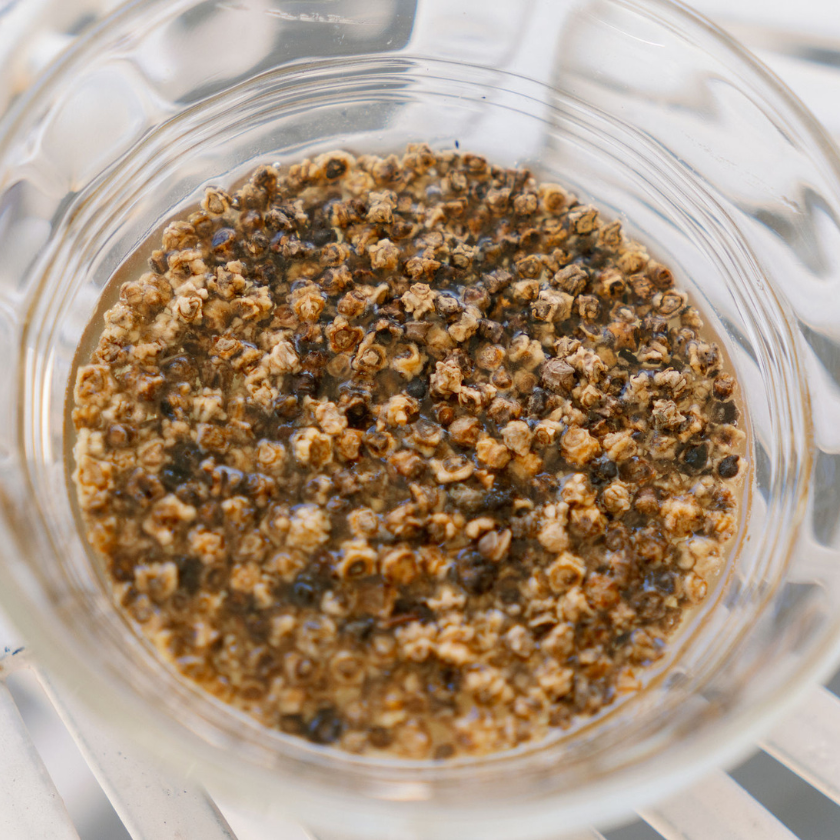
How to Disinfect Seeds Before Planting and Sprouting
There are a few different and effective ways to disinfect seeds. The best method for you to use will often depend on the planned end use of your seeds.
How to Disinfect Seeds Before Planting and Sprouting
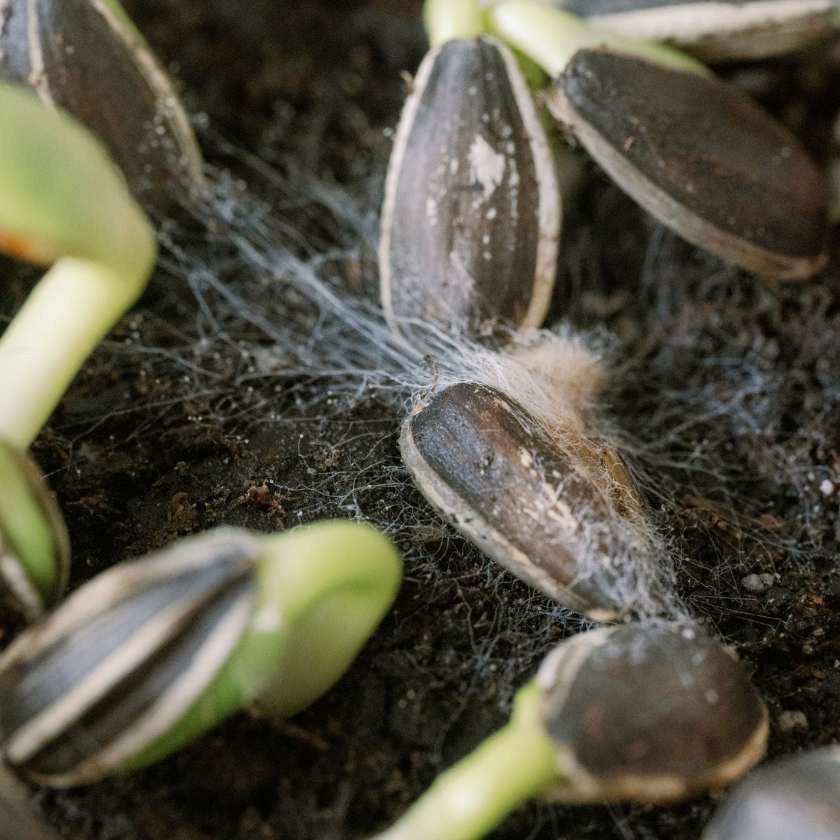
Mold on Microgreens- How to Combat and Prevent Mold
"Mold or root hairs?" has to be one of the most common questions new growers have when growing their first tray of microgreens.
Mold on Microgreens- How to Combat and Prevent Mold

Edible Flower Resource
Edible flowers are a wonderfully interesting, beautiful, beneficial, and high-value crop that can be added to your production.
Edible Flower Resource
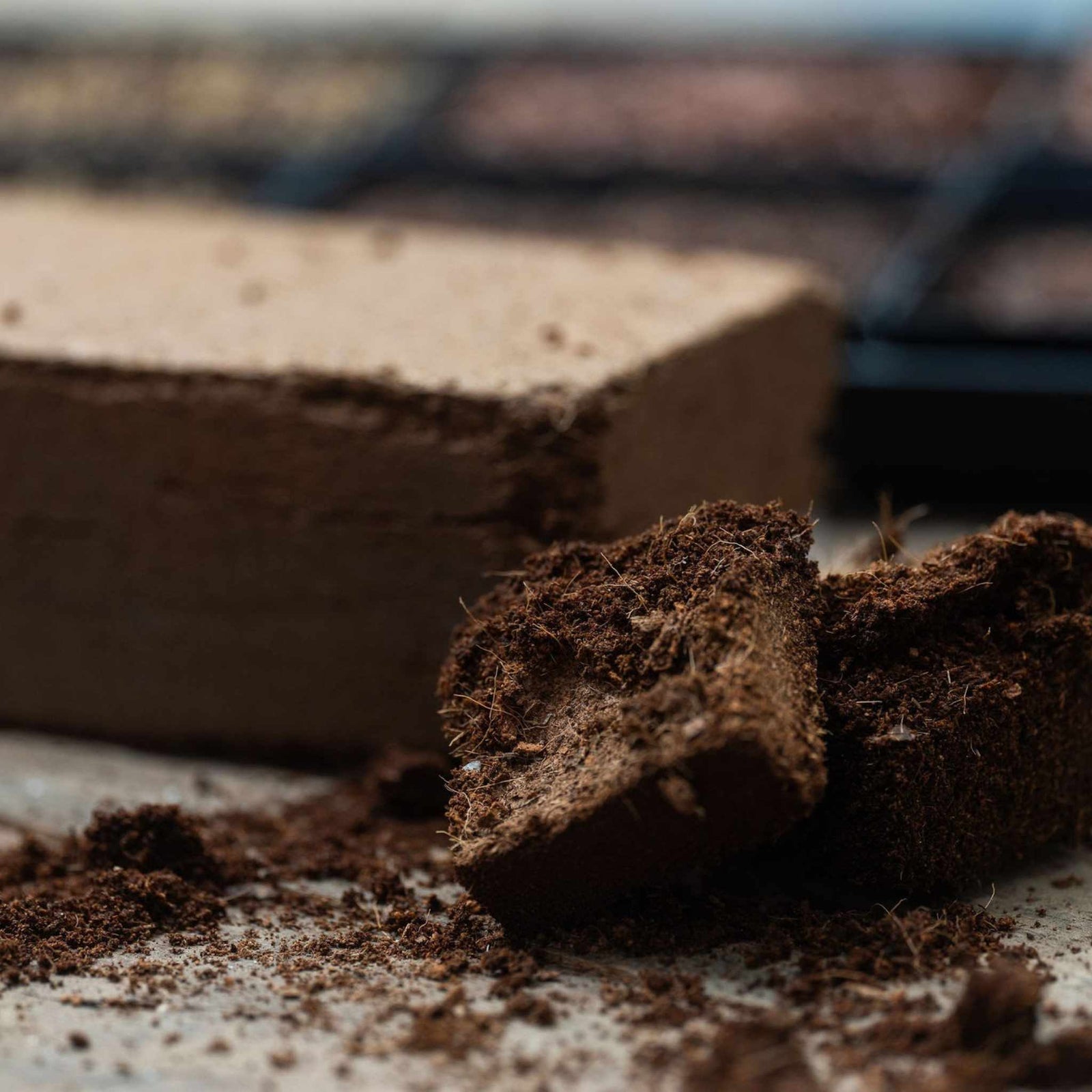
TOP 5 BEST GROWING MEDIUMS FOR MICROGREENS
The best medium for growing microgreens is one that allows proper drainage, is sterile and holds moisture efficiently.
TOP 5 BEST GROWING MEDIUMS FOR MICROGREENS
Recent Microgreens Blog Articles
Microgreens Frequently asked questions
-
To start a microgreens farm, you will need racks, lights, trays, and climate control like heat/AC, fans, and a dehumidifier. You will also need to invest in ongoing supplies like seeds, packaging/labels, and your growing medium.
-
Research local restaurants, caterers, and event spaces in your area and arrange to meet. Also, find out if you have a local farmers' market in your area.
-
The best way to manage mold on microgreens is prevention. If you have microgreens that are contaminated with mold, the best thing to do is toss out the microgreens, sanitize your trays, and correct any issues in your growing area.
-
Some places may require specific licenses or insurance for operating a food-related business, so check with your town, state, or local agencies.







